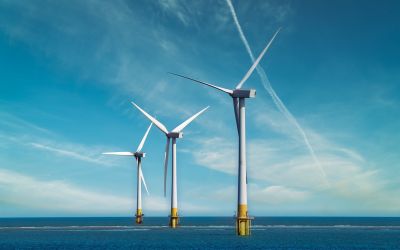Shuyi Li on how the Chinese Government is supporting decarbonisation of the harder to abate sectors
Ahead of the Industry Transition Summit, taking place on the 18 & 20 May, Climate Action caught up with Shuyi Li, Senior Associate at RMI China, to discuss how the Chinese government is supporting the decarbonisation of the harder to abate sectors.

Ahead of the Industry Transition Summit, taking place on the 18 & 20 May, Climate Action caught up with Shuyi Li, Senior Associate at RMI China, to discuss how the Chinese government is supporting the decarbonisation of the harder to abate sectors.
Following the release of China’s 14th Five Year Plan, which detailed the country’s decarbonisation plan, what pathways will Chinese industries be using to decarbonise?
The 14th FYP gives an insight into the main goals for China in 2021-2025, as well as its longer-term goals for 2035, requiring an 13.5% reduction in the nation’s energy consumption per unit of GDP and 18% cut in CO2 emissions intensity during the 2021-25 period. Carbon reduction actions of the industrial sectors come into 3 major area. One is demand reduction, meaning using fewer products and services to achieve the same living standards, enhancing material efficiency for less input to deliver the same goods, and promoting recycling as secondary production generates much less emissions. Two is energy efficiency improvement. While China has made continuous progress and some sectors are already leading their international counterparts, further potential is still to unlock with technology improvements and systematic optimization with digitalization. Three is accelerating the development and deployment of disruptive decarbonization technologies like green hydrogen, CCUS, bio-based solutions, etc… In this regard, as these technologies often have a cost premium, pilots with early opportunities will need to be supported by governments’ seed funding to kickstart the value chain cultivation process, which will help advance cost reduction to open up larger markets.
How is the Chinese government creating policies to support decarbonisation in the harder to abate sectors?
President Xi Jinping’s announcement of China’s 2030 carbon peaking and 2060 carbon neutrality pledge has released the strongest political signal ever to mainstream and accelerate the country’s actions. Following that, at the Party's Annual Central Economic Conference, China's highest Economy Planning meeting, where highest policy priorities for economic development will be identified for the coming year, carbon peaking/carbon neutrality is announced to be one of the eight top priorities of the whole country. These political incentives are driving decarbonization of harder-to-abate sectors into a new era, and related government agencies are working to push forward the agenda. The National Development and Reform Commission (NDRC), which plays the overarching role, is developing policies in areas including energy structure upgrade, industry structure transformation, energy efficiency, low-carbon technology acceleration, institutional mechanism development and carbon sinks. The Ministry of Industry and Information Technology (MIIT) is working on the carbon peaking action plans and roadmaps for major industrial sectors including steel, cement, etc… Recently on May 8, MIIT announced the Regulations on Capacity Replacement of China’s Iron and Steel Industry, urging backward capacity to phase out and increase industry concentration. This policy also encourages low-carbon technologies in new capacities. All these policies align with China’s support in industry decarbonization. Other than that, the Ministry of Ecology and Environment (MEE) is also a major agency. For example, the MEE is actively promoting the national carbon market, which is starting with the power sector but will in future include major industrial sectors as well.
China is leading globally in Hydrogen innovations, but many are concerned about the viability of projects right now. How do you see the scalability of H2 technologies over the next 5-10 years? How do you anticipate we overcome the high cost of new decarbonisation technologies, such as Hydrogen?
Currently, the focus of hydrogen use in China is mainly on the transportation sector. However, hydrogen use in industrial sectors represents a much larger market, both as fuel to provide high temperatures and as industrial feedstocks. According to RMI and the Energy Transitions Commission (ETC) zero-carbon scenario analysis, China’s hydrogen demand would expand to 81 Mt by 2050, from 25 Mt today, meaning 700-1000GW green hydrogen capacity by 2050 to support 70% of the 81 Mt. If doubling every 2-4 years, green hydrogen capacity needs to meet 100 GW by 2030.
Value chain cultivation is key to close the cost gap for disruptive technologies. The main challenge for green hydrogen is its chicken-and-egg problem – lack of initial demand impedes cost reduction of supply which in return locks the growth of demand. The first and crucial step to kickstart a virtuous circle is demonstrating pilots, starting with governments pulling in seed funding and all stakeholders undertaking a bearable cost premium. However, getting the project up running helps advance the maturity of technologies and business model and therefore allow lower costs to ramp up similar use cases. For another disruptive technology CCUS similarly, full-chain systematic integration and large-scale demonstrations are necessary to pave way for lower-cost commercial application. This can start from industrial hubs which bring economies of scale by sharing transport and storage infrastructure, and most preferably with chemicals production where high-concentration CO2 source allows lower capture cost.
China’s strategy on steel focuses a lot on recycling. Which do you think will play a larger role in industry decarbonisation, new technologies or recycling/circular economy?
Our zero-carbon scenario jointly developed by RMI and ETC suggested that by 2050, China’s steel production could fall to 475 million tonnes per annum as China’s urbanization reaches completion with likely end of construction boom. Moreover, an increasing proportion of steel could then come from recycling and EAF production, while primary steel production will couple with new technologies like green H2 DRI and CCUS to drive down emissions. Our scenario projected that recycled steel could account for 60% of China’s total steel production by 2050, with scrap supply expected to grow at 10% per annum and scrap prices likely to fall significantly as an increasing number of buildings, autos, and other equipment items reach end of life. However, to reach this level, it is essential that public policies and market mechanisms are designed to ensure maximum high-quality steel recycling. But to achieve zero-carbon emissions, China will definitely need to apply more radical decarbonization technologies to primary steel production. Two main routes are green H2 DRI and CCUS, the development and deployment of which will be a combined result of technology maturity, cost competitiveness and regional resource availability.
Shuyi Li is speaking at the Industry Transition Summit next week! Register now to connect with a growing network of key players in industry and harder to abate sectors to further drive decarbonisation through policy and regulation, to innovation, technology and investment.






